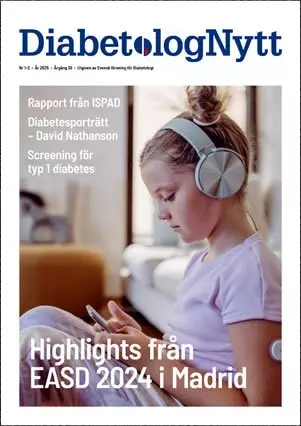https://www.ejog.org/article/S0301-2115(25)00039-9/pdf
Lower blood glucose cut-off values for diagnosing gestational diabetes were associated with reduced risk of large-for-gestational-age births, according to a study in the European Journal of Obstetrics & Gynecology and Reproductive Biology. The study of 1,237 women found the incidence of LGA decreased after the diagnostic change, even after adjusting for risk factors.
TITLE
Impact of lowering the blood glucose cut-off values in gestational diabetes mellitus on maternal and perinatal outcomes
Edvin Monemia, Joanna Tingstr ̈oma, Irene Sterpub, Eva Wiberg-Itzela,
*aDepartment of Clinical Science and Education, Soderhospital, Stockholm, Sweden Division of Obstetrics and Gynecology, Department of Clinical Sciences, Intervention and Technology (CLINTEC), Karolinska Institutet, Stockholm, Sweden
ABSTRACT
• Background:
Gestational diabetes mellitus (GDM) is associated with a risk of giving birth to neonates large for gestational age (LGA). Giving birth to a LGA child increases the risk of maternal and perinatal complications.
In Sweden, the blood glucose level required for GDM diagnosis has been lowered, resulting in an increased number of women receiving a GDM diagnosis.
• Purpose:
The study aimed to determine whether the change in diagnostic criteria for GDM impacted the incidence of LGA and the assessment of additional maternal and perinatal complications.
• Methods:
This retrospective cohort study involved 1237 women diagnosed with GDM. Among them, 92 delivered infants with LGA, 31 delivered infants small for gestational age (SGA), and 1111 delivered infants appropriate for gestational age (AGA). The primary outcome was to compare the incidence of LGA in the different cohorts based on the year they gave birth. Women without GDM at the same periods and their offspring were also analysed.
• Results:
The incidence of LGA decreased following the change in diagnostic criteria for GDM (OR 0.43; CI 95 %, 0.27–0.68), a result that remained consistent after adjusting for known risk factors (aOR 0.44; CI 95 %, 0.27–0.7).
• Conclusion:
Lowering blood glucose cut-off values was associated with reduced risk of LGA. Compared to the group of mothers without GDM, the intervention did not appear to account for the lower incidence of LGA. Instead, the results suggest a dilution effect, indicating that mothers included after the change were healthier, exhibiting milder diabetes and, therefore, showed improved outcomes.
The clinical trial registration number: NCT04794283
From the article
Läs hela artikeln odf free
https://www.ejog.org/article/S0301-2115(25)00039-9/pdf
Introduction
Gestational diabetes mellitus (GDM) is a common maternal condition defined as the onset of hyperglycemia during pregnancy due to glucose intolerance [1].
Increasing numbers of mothers with obesity and advanced maternal age have contributed to an escalating global prevalence of GDM [2]. GDM is associated with various maternal and peri-natal health risks, establishing it as a public health concern [3].
In 2020, Sweden revised the guidelines for GDM, lowering the specified blood glucose thresholds for diagnosis [4,5]. In 2016, 46 mothers who gave birth at Soderhospital were diagnosed with GDM.
However, the incidence increased to 553 in 2021 due to the newly implemented guidelines. Therefore, it is imperative to assess the maternal and perinatal outcomes of GDM following the updated diagnostic criteria
Conclusion
This study aimed to determine the impact of lowered blood glucose cut-off values for diagnosing GDM on the incidence of newborns diag-nosed with LGA.
The results showed a reduced risk of LGA in neonates born to mothers who delivered after the change in the diagnostic criteria. This risk reduction remained after adjusting for risk factors and confounders.
However, the comparison with non-GDM deliveries during the same period indicates that the results could be diluted, and the intervention may not have accounted for the lower incidence of LGA.
A more plausible explanation could be the overall less severe forms of GDM after the change in diagnostic criteria. Despite this, the intervention seemed to impact foetal outcomes positively.
Nyhetsinfo
www red DiabetologNytt





